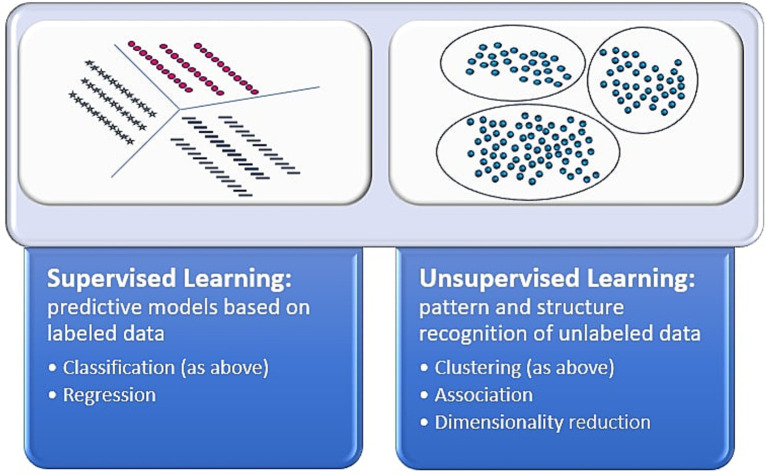July 31, 2024
The authors discussed applications of artificial intelligence (AI)/machine learning algorithms in survival analysis to skin cancer research publications. They reported on 16 such publications. Supervised machine learning (ML) would have used existing data for future dataset predictions. They mentioned several articles that applied supervised ML and then used Cox proportional hazard models to assess the effect of particular risk factors on survival time. It wasn’t clear from their description how the ML and the standard Cox modeling were tied together in these articles, but they said the supervised ML expanded upon previous statistical methods. They mentioned an article that used an alternative Cox loss function for melanoma survival prediction.
Unsupervised machine learning has used clustering to analyze the “unlabeled” datasets and then relied on machine learning to make unknown associations. They then mentioned the survival analysis in some of the articles they referenced included Kaplan-Meier analysis. Also hazard ratios were used and allowed the authors to overcome inadequate statistical power. They concluded that unsupervised learning aided to understand survival and prognostic outcomes. To summarize in their Figure 1, the supervised learning came up with predictive models based on labeled data using classification and/or regression while the unsupervised learning came up with pattern and structure recognition of unlabeled data by using clustering, association, or dimensionality reduction or a combination of these methods.
Deep learning, as they explained, is a class of multi-layered ML algorithms which were inspired by the human brain’s structure and function to improve accuracy. Neural networks, a set of algorithms based on interconnected nodes were to commonly used regression models to strengthen survival prediction. They said the authors found these models moderately improved predictions on survival time. They found neural networks were superior in providing improved risk predictions in patient populations.
Natural language processing (NLP) was also discussed, which as they stated uses computer-based algorithms, large language models (LLMs) to transform language, like blocks of text, into usable information for research. They found NLP had been used in dermatology and oncology to synthesize biopsy reports or extract symptoms from patient histories or even survival analysis. They said there was a lack of NLP survival analysis publications.
Per their discussion, survival analysis remains a ripe area for multimodal AI application by abstracting clinico-demographic data to generate predictive models. They suggested researchers could use NLP to extract unstructured data from clinical notes, deep learning for histology, and supervised learning for regression towards survival analysis and prognostication. The problems have been that LLMs are error-prone and can pull out unnecessary information or inaccurate information.
Written by,
Usha Govindarajulu, PhD
Keywords: survival analysis, AI, machine learning, unsupervised, supervised, NLP, LLM
References
Schreidah CM, Gordon ER, Adeuyan O, Chen C, Lapolla BA, Kent JA, Reynolds GB, Fahmy LM, Weng C, Tatonetti NP, Chase HS, Pe’er I, Geskin LJ. Current status of artificial intelligence methods for skin cancer survival analysis: a scoping review. Front Med (Lausanne). 2024 Apr 22;11:1243659. doi: 10.3389/fmed.2024.1243659. PMID: 38711781; PMCID: PMC11070520.
https://www.ncbi.nlm.nih.gov/pmc/articles/PMC11070520/#ref17
https://www.ncbi.nlm.nih.gov/pmc/articles/PMC11070520/bin/fmed-11-1243659-g001.jpg
